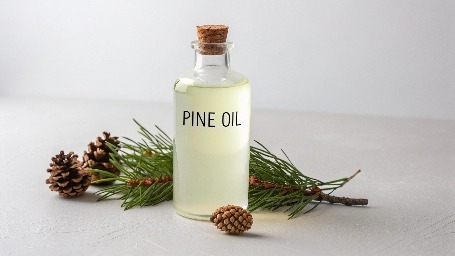Comparing Pine Oil Prices with Other Disinfectants
The pine oil
price
has become a focal point for consumers and industries seeking
effective and eco-friendly disinfectants. Derived from pine trees, pine oil is celebrated for its
natural disinfectant properties and characteristic pine scent. However, how does its cost stack up
against other disinfectants like chemical disinfectants, tea tree oil, or eucalyptus oil? This blog
explores pine oil pricing, its variants, and compares it to alternative disinfectants to help you make
an informed choice.
Understanding Pine Oil and Its Variants
Pine oil is a versatile
essential oil extracted from pine needles, pine resin, or pine
wood through steam distillation. It contains compounds like α-pinene, β-pinene,
Delta-3-Carene, and
Terpinolene Oil, which contribute to its disinfectant properties and fresh pine aroma. The pine oil price
varies based on its purity and concentration, with common grades including:
Why Pine Oil is Essential for Disinfectant Manufacturing
- Pine Oil 65%: A cost-effective option for industrial-grade pine oil used in bulk
disinfectants.
- Pine Oil
70%: Slightly higher purity, balancing cost and efficacy for household
disinfection.
- Pine
Oil 85%: A high-quality pine oil used in pine-scented cleaners and aromatherapy.
- Pine Oil 95% India: A premium, high-purity oil, often exported for specialized
applications.
Other related oils, such as Dipentene Oil,
DDTO Oil, and
Terpinolene
Oil, are sometimes
blended with pine oil to enhance its properties or reduce costs. These blends can impact pricing and
performance in disinfection applications.
Why Choose Pine Oil?
When comparing pine oil prices with other disinfectants, pine oil stands out for:
- Cost-Effectiveness: Pine Oil 65% and 70% are budget-friendly for everyday cleaning.
- Eco-Friendly Appeal: Derived from pine trees, it’s a sustainable choice compared to
petroleum-based disinfectants.
- Versatility: From pine-scented cleaners to industrial-grade pine oil, it serves multiple
purposes.
- Natural Aroma: The characteristic pine scent adds a fresh, forest-like feel to cleaning products.
Considerations
While pine oil is a compelling choice, avoid products with synthetic additives that dilute its natural
disinfectant properties. For high-purity needs, such as in aromatherapy or
specialized cleaning, Pine Oil
95% India is worth the investment.
The pine oil price reflects its quality, purity, and market dynamics, making it a competitive option among
disinfectants. Whether you choose Pine Oil
65% for budget-friendly cleaning or Pine Oil 95% for premium
applications, it offers a natural, effective alternative to chemical disinfectants and pricier oils like tea
tree oil. By understanding its pricing and properties, you can select the right pine oil product for your
disinfection needs while enjoying its refreshing pine aroma.
.jpg)
